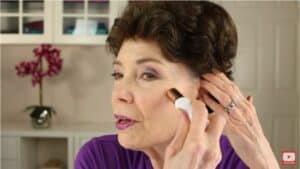
As we age, we start to lose our balance, and this increases our risk of falling. Did you know that our balance starts to decline between 40 and 50? In fact, falls are one of the most common reasons for emergency room visits among seniors.
Scary, right? You might be thinking, “That won’t be me…”; however, science and years of research tell us otherwise. Falls are the second leading cause of unintentional injury deaths worldwide.
However, it’s not all doom and gloom when it comes to your balance. Balance work is like a muscle that needs to be worked regularly to be improved. Our bodies are capable of so much if we move them properly.
One way to reduce this risk is by doing exercises to improve your balance. Here’s how Pilates can help you improve your balance and prevent you from losing your footing:
Pilates Strengthens Muscles in the Feet and Ankles
Pilates is a popular form of exercise that focuses on developing core strength, improving posture and flexibility. While it is often associated with strengthening the abdominal muscles, Pilates is also highly effective in strengthening the muscles in the feet and ankles.
The foot and ankle are complex structures that play a vital role in providing stability and support to the body during everyday activities, such as walking and standing. We often don’t give our feet a lot of love which can backfire when it comes to our balance. Bottom line: if you don’t keep your feet conditioned it will be harder to recover when you do take a misstep.
Weakness or instability in these muscles can lead to various foot and ankle injuries and contribute to a loss of balance and an increase in trips and falls. In Pilates, exercises are designed to improve the strength and flexibility of the foot and ankle muscles. These exercises typically involve various movements that challenge the muscles in the feet and ankles, such as pointing and flexing the feet, performing foot circles, and working on balance and stability.
We need the muscles in our feet and ankles to give us a solid foundation as we move about our day. Think about it: our feet are our point of connection to the ground, so much like tires on our cars, keeping them in good condition can help prevent accidents.
Ultimately, working to strengthen the foot and ankle as we get older is imperative to supporting our balance.
Pilates Promotes a Strong Core, Which Helps to Build a Stable Base
A strong core is essential for maintaining good balance and stability. The core muscles include the muscles of the abdomen, back, and pelvis, and they provide the foundation for all movement in the body. These muscles are responsible for stabilizing the spine and pelvis, which in turn helps to maintain proper alignment of the entire body.
When the core muscles are weak or imbalanced, it can result in poor posture, increased strain on the back, and decreased stability and balance. This can lead to a greater risk of falls and injuries, particularly in older adults.
A strong core helps to maintain balance by providing a stable base from which the limbs can move freely. It allows us to feel stronger, be more centered, aligned and confident in our bodies as we move, stand, walk or run.
You can enhance your overall fitness and reduce the risk of falls and injuries by improving core strength through exercises such as planks, bridges, and crunches.
Pilates Helps Build Proprioception
Proprioception – it’s a mouthful to say, but what exactly is it?
Your proprioception is your body’s awareness of its position and movement in space. When you have good proprioception, your brain and body work together to detect changes in body position and adjust accordingly, allowing for greater control and balance. For example, without proprioception, you wouldn’t be able to move your foot if you aren’t looking at it.
Why is this important?
Proprioception tends to decline with age, which can increase the risk of falls and injuries, particularly in older adults. As we age, the receptors in our joints, muscles, and tendons that provide sensory feedback to the brain become less efficient. This reduces the brain’s ability to accurately detect changes in body position and movement, making it more difficult to maintain balance and coordination.
This is why it’s important for older adults to engage in exercises that specifically target proprioception, such as Pilates, yoga, and tai chi. These exercises can help to improve your proprioception, reduce the risk of falls, and enhance overall mobility and quality of life.
As I often tell my online Pilates members, with balance work if you don’t use it, you lose it.
This is why in each of my Live Online Pilates classes we spend a portion of each class strengthening our feet and ankles, practicing our balance and promoting proprioception (in addition to building full body strength, improving joint mobility and spine work).
Building better balance is one of the many benefits of Pilates. As outlined above, fostering better balance requires many different parts to work together. Pilates can be a great addition to any exercise routine, and it’s beneficial for seniors who want to improve their balance or prevent falls in the future.
Let’s Have a Conversation:
Do you practice your balance regularly? Have you noticed a decrease in your balance as you age? Have you ever considered Pilates as a way to build your balance?





